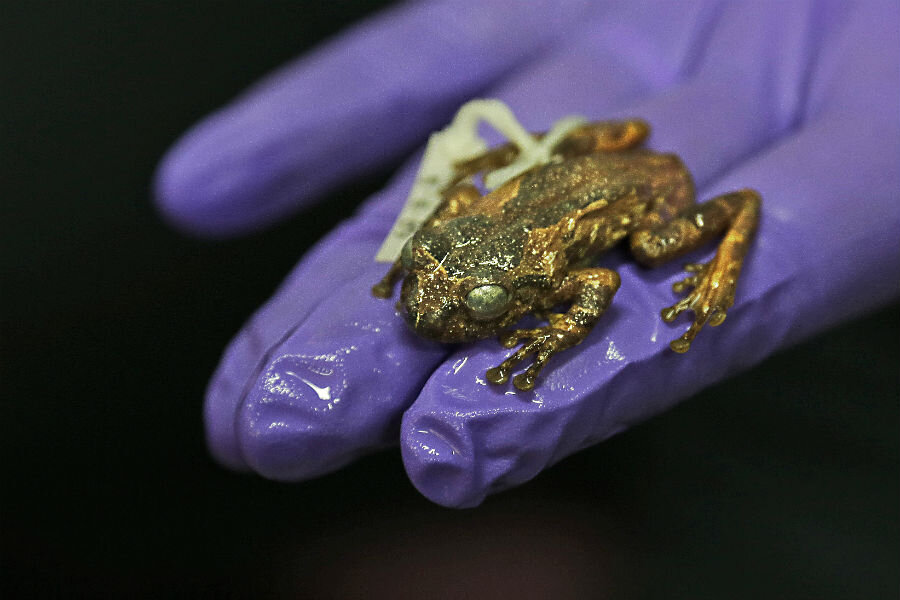Bizarre, long-lost tree frog discovered in India: Why its habitat may be in danger
Loading...
For nearly 150 years, a bizarre tree frog species with eyes on top of its head was thought to be long-extinct.
But now a group of scientists, led by renowned Indian biologist Sathyabhama Das Biju, has rediscovered the golf-ball sized frogs living in jungles in India’s West Bengal state, in the foothills of the Himalayas.
What’s more, the elusive frog first collected by a British naturalist in 1870 is part of an entirely new genus, one level up from a species, Dr. Biju and his colleagues write in a paper published Wednesday in the Public Library of Science journal PLOS ONE.
They believe the amphibians, first discovered by accident in forests in four northeastern Indian states in 2007, could also be living across much of Asia, from China to Thailand.
Finding the frogs was unexpected for Biju – known in India as the “Frog Man” for his discovery of 89 of the country’s 350 known species – and his team.
They were exploring the area for other amphibians when, “we heard a full musical orchestra coming from the tree tops. It was magical. Of course we had to investigate.” Biju told the BBC.
Observing the frog’s behavior led to an unusual discovery – females feed their young their own unfertilized eggs. The frogs have developed particular behaviors to make this possible, with the females laying their eggs in trees filled with water. In order to digest the eggs, the tadpoles – which typically have small proto-teeth, instead have smooth mouths that help them suck in the eggs.
Biju suggests that the positioning of their eyes on the top of their heads also helps them see the eggs fed to them by their mothers.
Unlike other frog species, Frankixalus jerdonii – originally named Polypedates jerdonii for the British naturalist T.C. Jerdon – eats mostly vegetation rather than insects and larvae.
The fact that the frogs live as much as 20 feet above ground may have been part of the reason they were hidden from scientists for so long, Biju says. Most tree frogs live in shrubs or tree holes closer to the ground. But other scientists point to the remote location of the scientists’ discovery.
"This part of Southeast Asia, in particular, is poorly inventoried," James Hanken, a biology professor and director of the Museum of Comparative Zoology at Harvard University told the Associated Press
Professor Hanken, who wasn’t involved with the study, calls the find “remarkable” but notes that the discovery “points out that we may be losing even more species than we know or can fully document.”
The new genus Frankixalus is named in honor of Biju's former advisor at Vrije Universiteit in Brussels, herpetologist Franky Bossuyt. The scientists identified two species of the genus so far, having discovered the new genus – after years of conflicting identifications – by sequencing the frog’s genetic code.
“This is an exciting find, but it doesn't mean the frogs are safe," Biju told the AP. He hopes the discovery and additional information about the frog’s “enigmatic lineage” in the paper will lead to further awareness about the dangers man-made development can have on the animals.
Some of the areas in northeast India where his team collected frogs in 2007 and 2008 were already slashed and burned by 2014 for agricultural use. In addition to deforestation, the frogs are also endangered by increasing pollution levels in the area.
“This frog is facing extreme stress in these areas, and could be pushed to extinction simply from habitat loss," Biju said. “We're lucky in a way to have found it before that happens, but we're all worried.”







